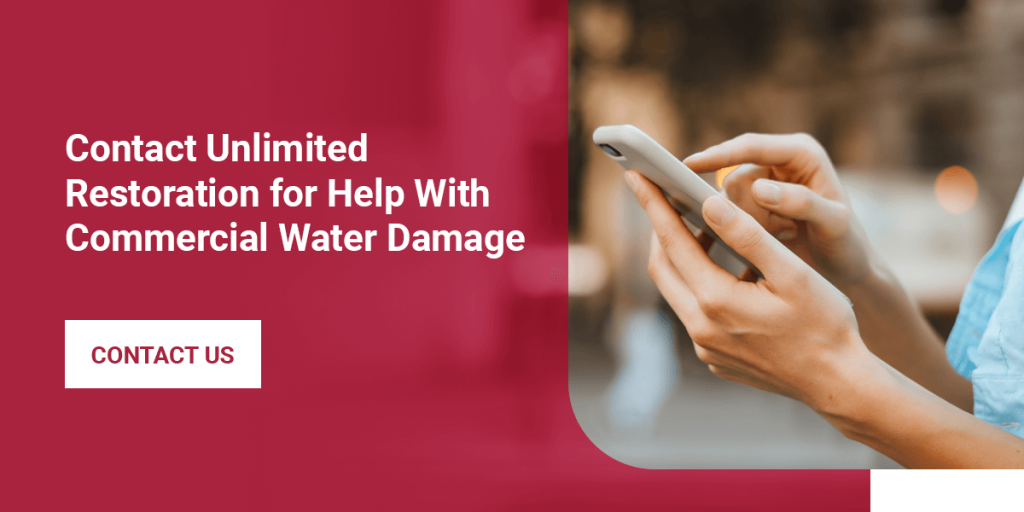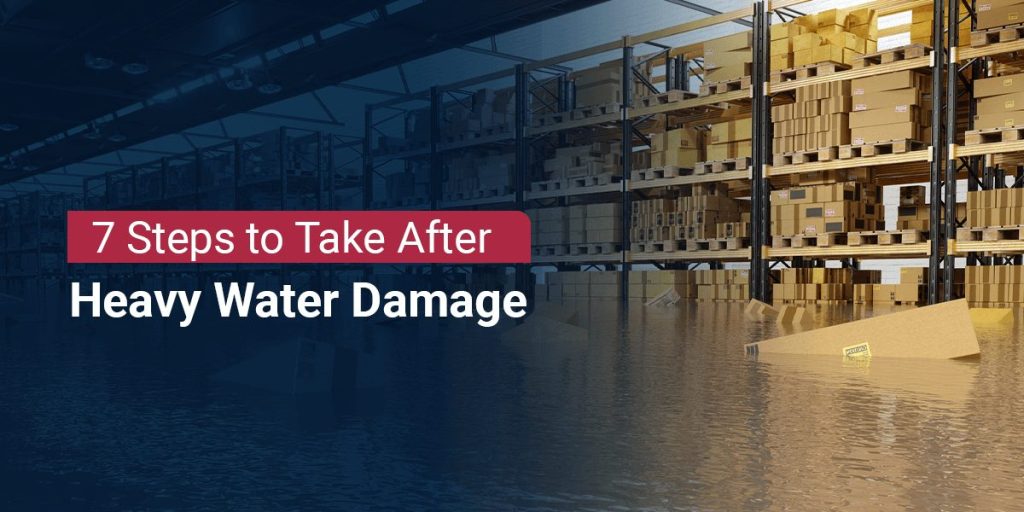
Commercial properties are not immune to the dangers of flooding and pipe leaks. Unfortunately, commercial water damage occurs far too often. The after-effects severely impact infrastructure and income. When left untreated, the excess water can cause mold formation, impair building features and expose employees to dangerous contaminants. It’s crucial to address water damage as swiftly as possible to prevent further harm.
In the aftermath of a flood or excess water, there are essential steps you should take to protect your property. For commercial properties, it’s vital to address the damage thoroughly to avoid any lost revenue. Here are some things to keep in mind after water damage occurs.
There are both apparent and hidden effects of water damage for commercial properties. Excess water can spread through the building, ruining features like drywall and insulation. Or, if severe enough, the damage could stop business operations altogether. While insurance can cover some costs, the financial implications could outweigh the coverage. The damage has consequences in the immediate aftermath and the long-term, especially when not appropriately addressed.
Here are more short-term effects:
Water damage creates many long-lasting consequences for commercial properties if not handled correctly. Here are some examples:
Many factors can cause commercial water damage. Because of the variety of commercial buildings — from skyscraper office buildings to single-tenant restaurants — leaks can occur in many areas. Recognizing potential water leaks is essential for water damage prevention.
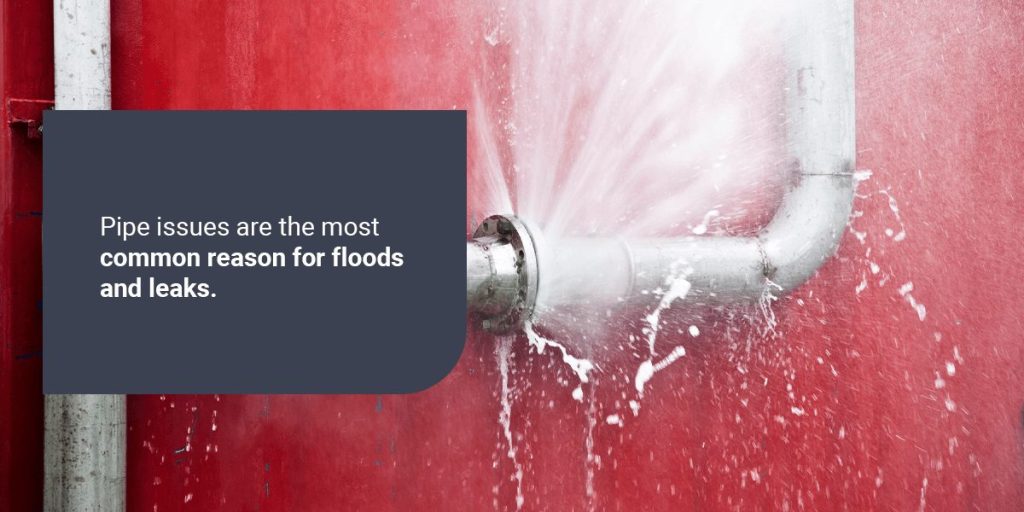
These are some frequent causes:
The worst water impairments occur when restoration efforts aren’t performed correctly. Noticing signs of damage, like water stains, standing puddles and musty smells, are crucial for preventing further harm.
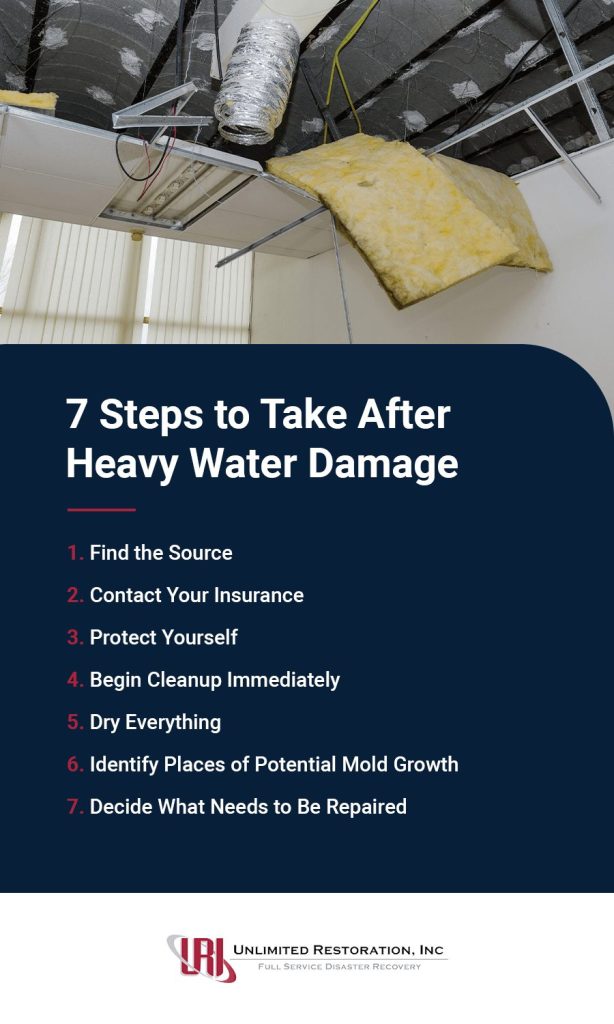
Once flooding or water impairments occur, you must take swift action to avoid as many long-term damages as possible. The sooner you act, the sooner you protect your commercial property.
These are seven essential steps to take after heavy water damage:
If the damage’s cause isn’t immediately apparent, you should uncover the leakage’s source. Look closely at walls and ceilings for water stains. Check pipes and other plumbing to ensure the water didn’t originate there. You should also examine any holes in your walls, ceilings or roof for water drips. If you can’t find the origin on your own, ask a local plumber for help.
Once you find the source or if the leak is severe, it’s best to shut off the main water. If a pipe or other water structure is housing the leak, turning off the main source will stop further dripping.
Once you identify the water’s origin, it’s crucial to contact your insurance provider as soon as you can. While insurance coverage varies, it’s best to contact insurance providers to start the process. Commercial flood insurance and business income insurance are great options for commercial properties. Insurers can also connect you with restoration services.
Be sure to document any property damages with photos or detailed notes. Keep a record of items or infrastructure that appear unsalvageable. Prepare answers to any potential questions, like the extent of the damage or moisture levels.
When dealing with floodwater, it’s crucial to wear protective gear and proceed with caution. If you must enter the flooded building, take care to do so with caution. Floodwater is often full of contaminants and potential toxins, so you should avoid extended contact when entering the flooded area. Wear an N-95 mask and thick boots if possible. Turn off the electricity when entering rooms with standing water. In addition, don’t use any electrical appliances on wet carpets or surfaces.
In excess water situations, it’s critical to act quickly. The longer you wait to address the water damage, the further the negative effects could spread. First, you should get your property checked for hazardous conditions. Once professionals declare the property safe, you should begin the clean-up process within 24 to 48 hours.
You might also want to contact cleaning companies to ensure the most thorough cleanse possible, especially in the event of mold. It’s a time-consuming and difficult task to clean areas damaged by water, so the more help you get, the better.
After you clean the property, you should dry and dehumidify the affected areas of the property with the help of a restoration service. They can evaluate the extent of the water damage and advise you on the best steps for your property. They can also note the best air circulation methods for your materials.
During the drying process, remove furniture and other contents to dry in other locations. If weather permits, natural sunlight is a great absorbent of moisture. Use high-powered air movers to drywalls and ceilings as quickly as possible. Water restoration specialists can further assist with this if you wonder how to dry out walls after water damage.
However, while some things are dryable, you will need to dispose of others. You cannot fully disinfect porous or easily absorbent materials, such as carpet. Instead, get rid of the wet items and plan to replace them. On the other hand, harder surfaces can usually be wiped and salvaged.
Mold forms easily in standing water, often within only 24 hours. Be on the lookout for signs of mold growth on walls, floors and ceilings. Look specifically by the source of the leak for more growth, and use cleaners like bleach and soap for small amounts of mold. Never touch mold with your bare hands or without protective equipment.
In most cases, though, mold removal requires the help of professionals. If you see mold growth larger than a few feet, get in touch with removal specialists. There are many safety precautions to take when extracting mold, so it’s safer to leave it with the professionals. They can also identify early mold development where you might not recognize it, saving you from further harm in the long run.
Once you clean, dry and inspect your property, you can begin reparations. An inspector should provide a report on all the damages and possible repairs and you can work with your property contractor to plan the next steps. Leaks should probably come first on your list so that you can prevent future water damage. Depending on what your plan covers, you can also consult your insurer about replacement options.
After water damage occurs, you should plan for future flooding. Especially if your commercial property resides in a high-risk area, flood protections are beneficial. Consider using a flood barrier or elevation tools to flood-proof your property.
Due to the severe dangers of water damage, it’s always a good idea to protect your property from flooding. By taking extra efforts, you can work against potential future damages. Here are more water damage restoration tips for protecting your commercial property:
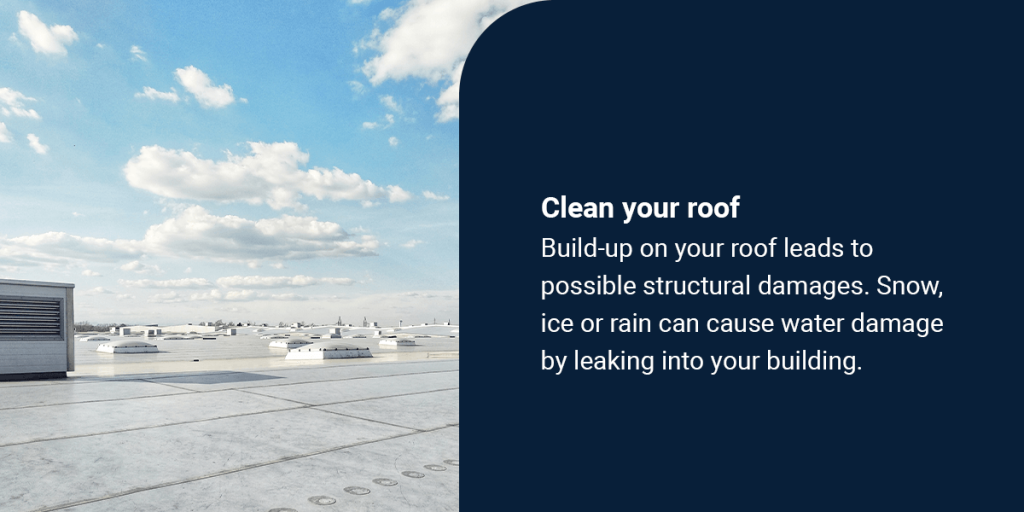
To ensure the most comprehensive clean-up for your estate, consider working with a team of professionals. These specialized teams ensure to take all necessary measures for the safety of your property and staff. They can also advise you about the best next steps for reparations or sometimes even assist with repairs.
Here are a few more reasons to consider a restoration team:
At Unlimited Restoration, we know the necessity of swift water damage restoration. Our quick and thorough restoration services allow you to resume business with a secure mindset after a water crisis. We understand the frustration and uncertainty that accompanies water damage to your commercial property. Our dedicated team of professionals, trained in world-class health and safety protocol, works hard to bring your property back to its best shape.
Contact Unlimited Restoration today for more information about our water removal services. We look forward to hearing from you and helping you revive your commercial property!
